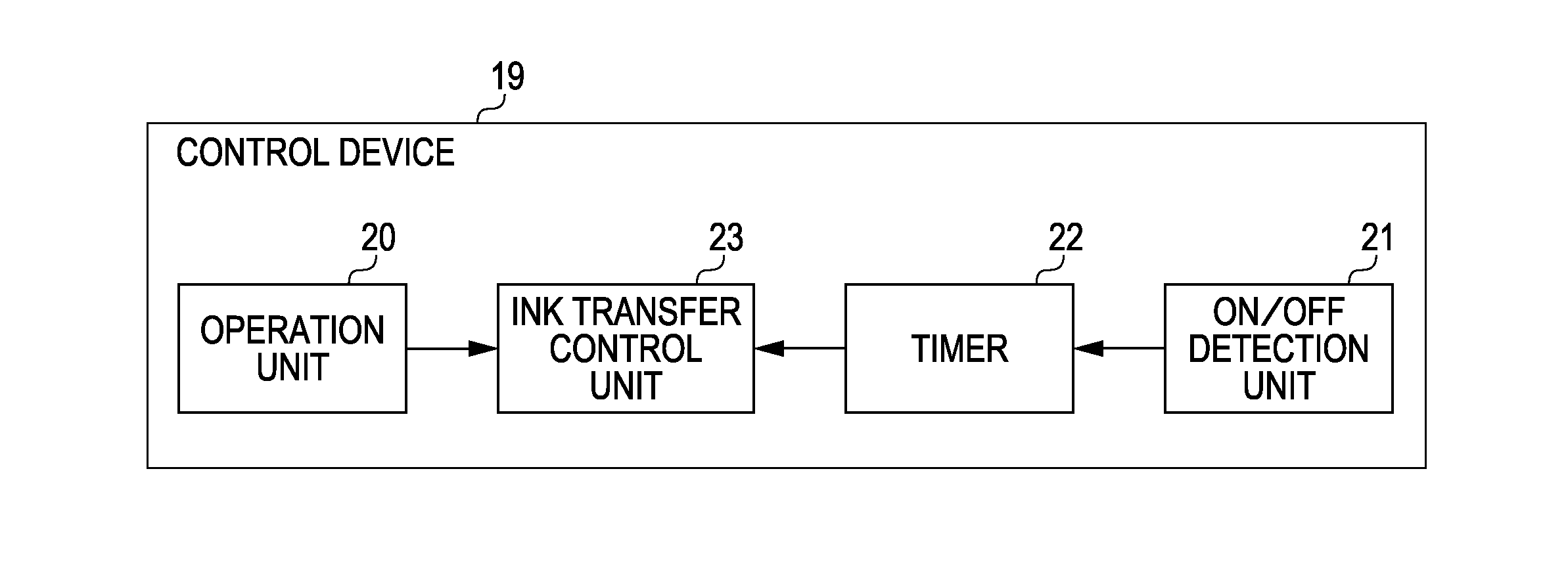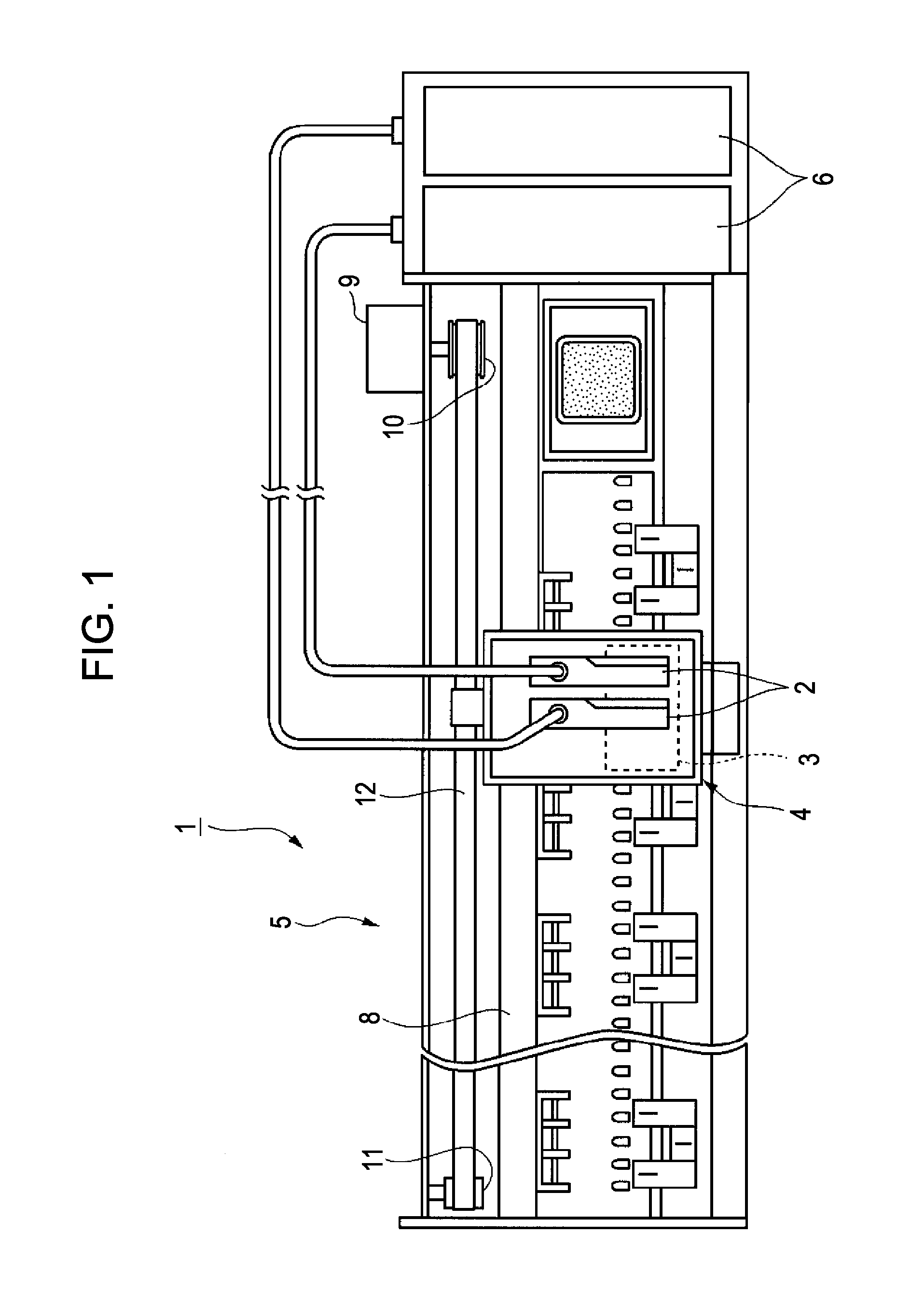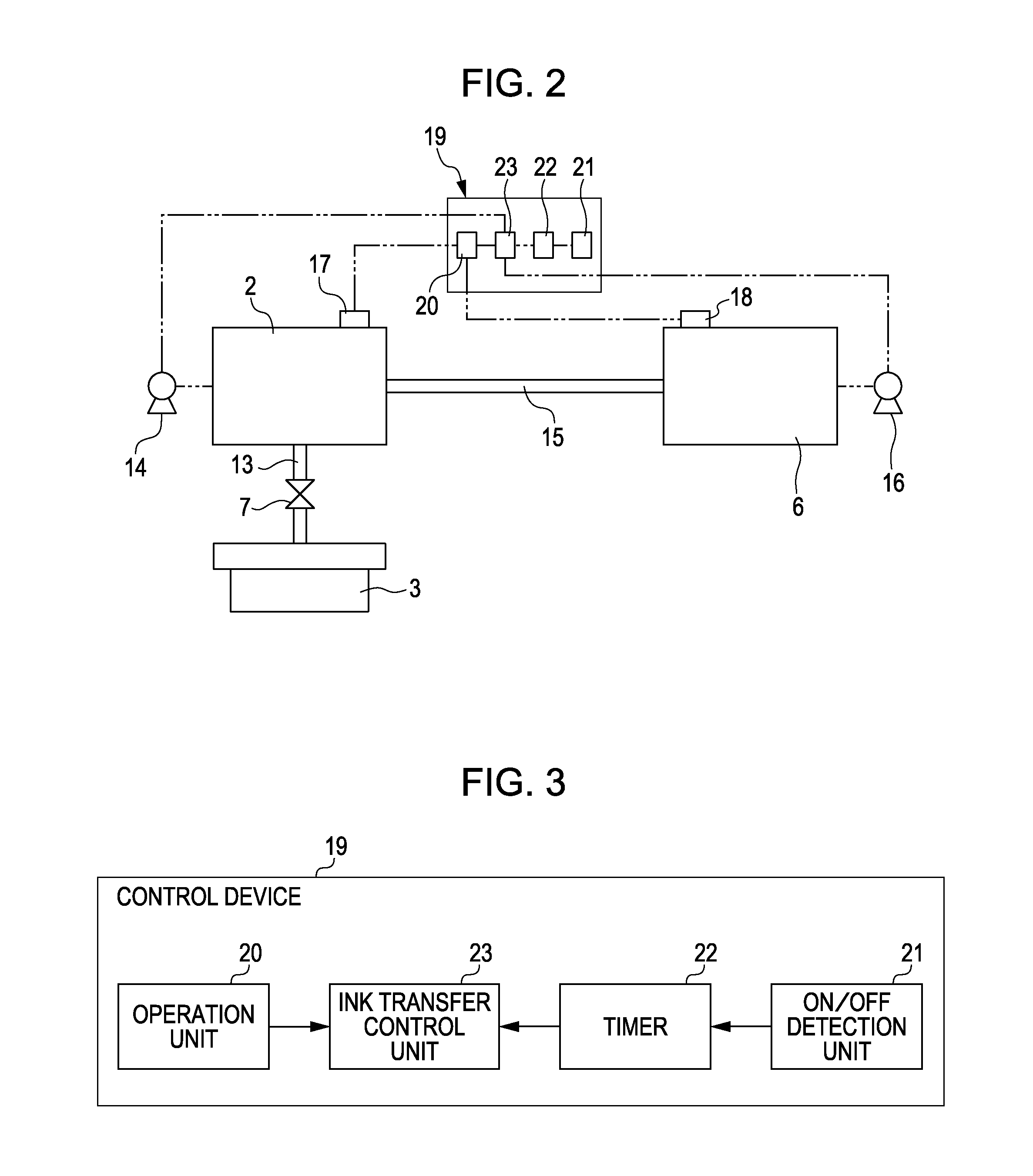Liquid ejecting apparatus
a liquid ejecting and ejector technology, applied in the direction of printing, other printing apparatus, etc., can solve the problems of uneven recording quality, clogging of recording heads, and non-uniform concentration of solid content in ink
- Summary
- Abstract
- Description
- Claims
- Application Information
AI Technical Summary
Benefits of technology
Problems solved by technology
Method used
Image
Examples
Embodiment Construction
[0029]Hereinafter, an embodiment of the invention is described with reference to drawings. FIG. 1 is a fragmentary exploded view illustrating a schematic configuration of a printer (liquid ejecting apparatus) according to an embodiment of the invention. In FIG. 1, a reference numeral 1 denotes the printer.
[0030]The printer 1 is schematically configured to include a carriage 4 on which a sub tank (first tank) 2 and a recording head (liquid ejecting head) 3 are mounted, a printer main body 5, and a main tank (second tank) 6 formed by an ink cartridge.
[0031]The printer main body 5 is provided with a carriage movement mechanism (not shown), a paper feeding mechanism (not shown) and the main tank 6 (ink cartridge). The carriage movement mechanism reciprocates the carriage 4. The paper feeding mechanism transports a recording paper (not shown). The main tank 6 stores (accommodates) ink to be supplied to the recording head 3.
[0032]The carriage movement mechanism includes a guiding shaft 8,...
PUM
 Login to View More
Login to View More Abstract
Description
Claims
Application Information
 Login to View More
Login to View More - R&D
- Intellectual Property
- Life Sciences
- Materials
- Tech Scout
- Unparalleled Data Quality
- Higher Quality Content
- 60% Fewer Hallucinations
Browse by: Latest US Patents, China's latest patents, Technical Efficacy Thesaurus, Application Domain, Technology Topic, Popular Technical Reports.
© 2025 PatSnap. All rights reserved.Legal|Privacy policy|Modern Slavery Act Transparency Statement|Sitemap|About US| Contact US: help@patsnap.com



